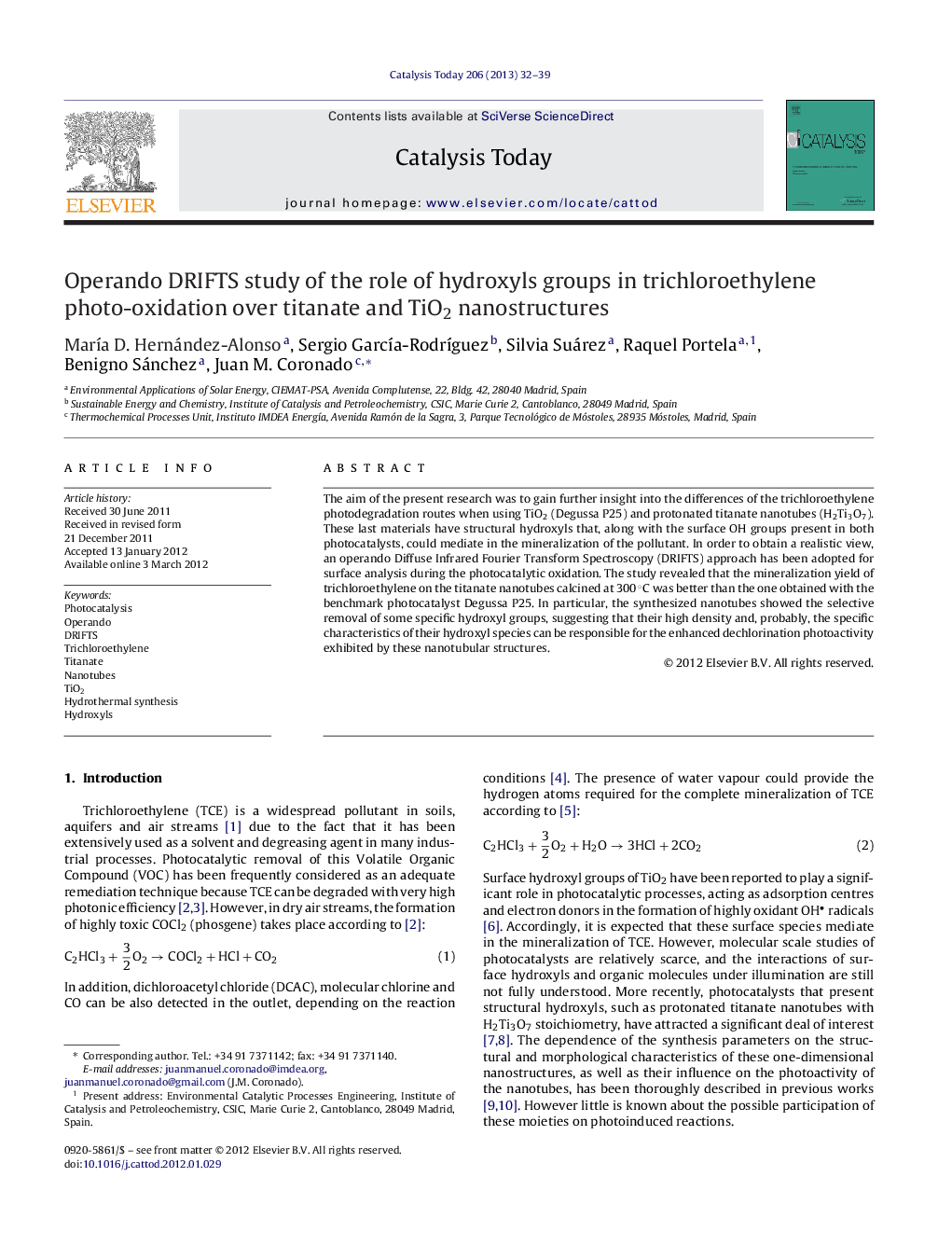| کد مقاله | کد نشریه | سال انتشار | مقاله انگلیسی | نسخه تمام متن |
|---|---|---|---|---|
| 54916 | 47031 | 2013 | 8 صفحه PDF | دانلود رایگان |

The aim of the present research was to gain further insight into the differences of the trichloroethylene photodegradation routes when using TiO2 (Degussa P25) and protonated titanate nanotubes (H2Ti3O7). These last materials have structural hydroxyls that, along with the surface OH groups present in both photocatalysts, could mediate in the mineralization of the pollutant. In order to obtain a realistic view, an operando Diffuse Infrared Fourier Transform Spectroscopy (DRIFTS) approach has been adopted for surface analysis during the photocatalytic oxidation. The study revealed that the mineralization yield of trichloroethylene on the titanate nanotubes calcined at 300 °C was better than the one obtained with the benchmark photocatalyst Degussa P25. In particular, the synthesized nanotubes showed the selective removal of some specific hydroxyl groups, suggesting that their high density and, probably, the specific characteristics of their hydroxyl species can be responsible for the enhanced dechlorination photoactivity exhibited by these nanotubular structures.
Figure optionsDownload high-quality image (287 K)Download as PowerPoint slideHighlights
► Titanate nanotubes photocatalytic activity is greatly enhanced by calcination at 300 °C.
► DRIFTS identifies several intermediates like dichloroacetate and formate.
► Nanotubes present the selective removal of some specific hydroxyls groups which enhance dechlorination.
Journal: Catalysis Today - Volume 206, 1 May 2013, Pages 32–39